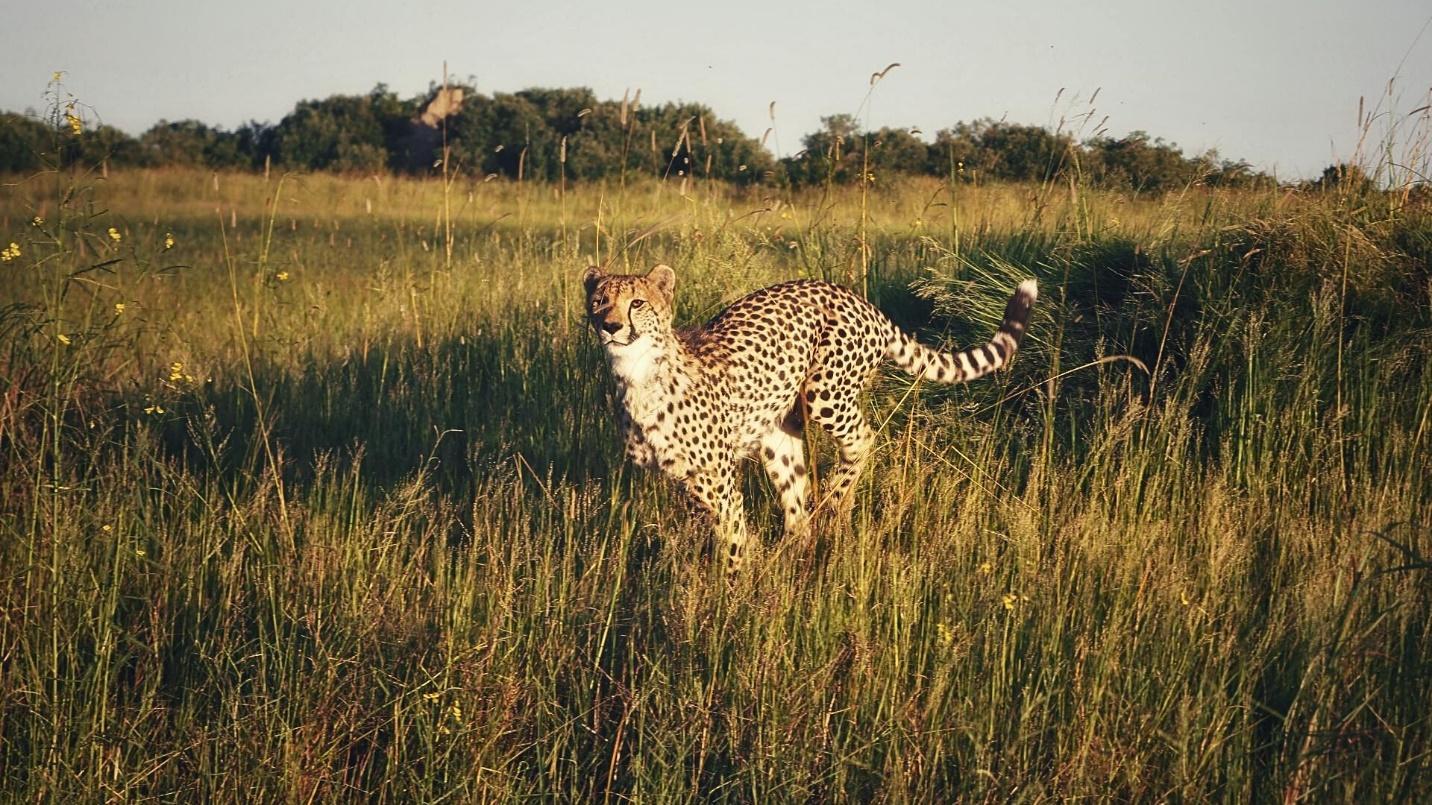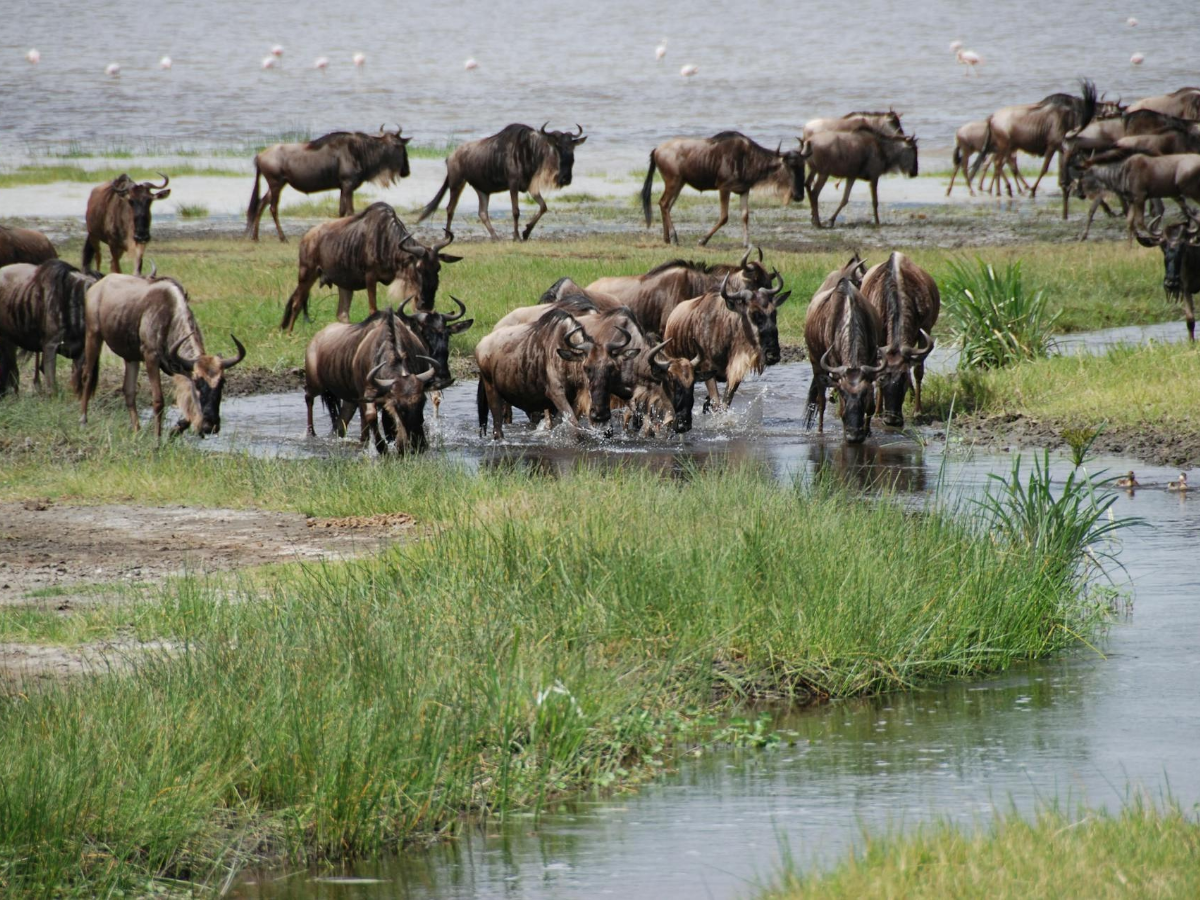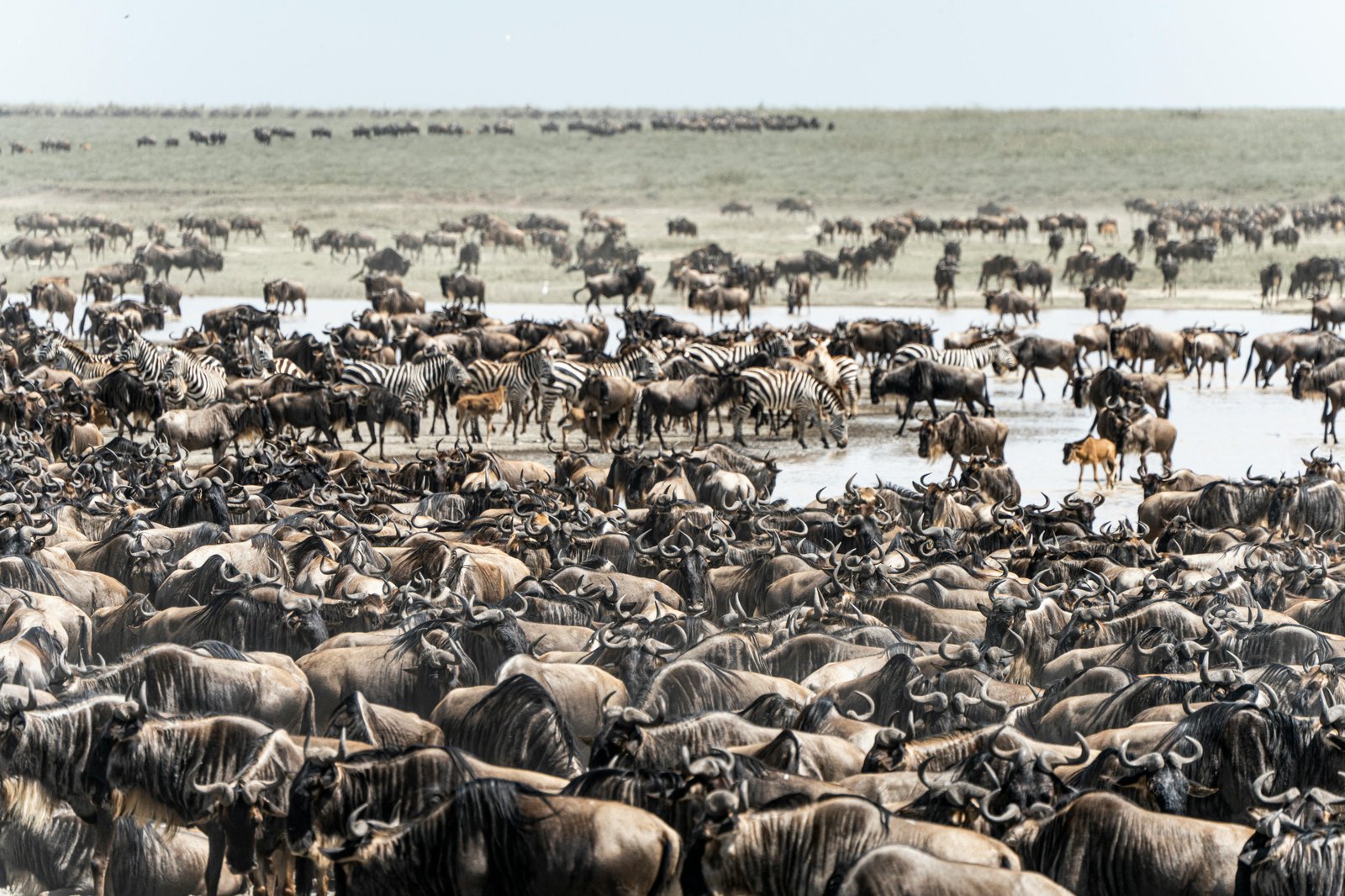Silent Stalkers & Relentless Pursuits: The Great Migration Through a Predator’s Eyes (Serengeti’s Drama Unfolded)



You’ve heard the thunder of hooves, seen the endless plains blanketed in wildebeests. But for every wildebeest on the move, there’s a set of eyes watching, a pair of paws stalking, a silent hunter whose very existence is tied to this epic journey. The Great Wildebeest Migration isn’t just a story of escape; it’s a relentless saga of pursuit, a high-stakes drama played out daily on the golden stage of the Serengeti. Step into the world of Serengeti’s predators, the silent stalkers and formidable hunters whose lives are inextricably linked to the ebb and flow of this massive movement. Get ready to witness the raw, untamed reality of the Serengeti food chain, where every hunt is a dance of survival.
The Unseen Architects of the Migration’s Rhythm
While the wildebeest dictate the path, the predators dictate the pace, the caution, and the very selection of the fittest. Lions, cheetahs, leopards, and hyenas aren’t just opportunistic hunters; they are crucial components of this vast ecosystem, ensuring the health and resilience of the herds by preying on the weak, the old, and the unwary. Their presence adds an electrifying layer of anticipation to every Tanzania safari.
The Prides Reign: Lions & The Strategic Ambush

For the magnificent Serengeti lions, the Migration is a moving feast. As the herds arrive in their territories, the hunting season peaks. Lions often favor ambush tactics, using the terrain, tall grass, or even the chaos of a river crossing to their advantage. A pride can decimate a large number of wildebeest in a short period, especially during the calving season when vulnerable newborns are plentiful. Witnessing a coordinated lion hunt is an intense, unforgettable display of power and teamwork. They are the most active wherever the herds are concentrated- from the southern plains during calving (December to March) to the river crossings in the north (July to October).
The Swift Blur: Cheetahs & The Open Pursuit

The cheetah, the fastest land animal, is a blur of spots and speed. Unlike lions, cheetahs rely on their incredible acceleration to bring down their prey. They are solitary hunters or hunt in small family groups, often targeting weaker wildebeest and gazelles. Their hunts are explosive, short-lived bursts of pure adrenaline, making them one of the most exciting Serengeti big cats to witness in action. They are the most active in open grasslands where they can utilize their speed, common in the central and eastern Serengeti.
The Misunderstood Masterminds: Hyenas & Relentless Harassment

Often fairly maligned as mere scavengers, Serengeti hyenas (spotted hyenas) are incredibly powerful and intelligent hunters, responsible for a significant portion of kills during the Migration. They hunt in clans, using stamina and numbers to relentlessly pursue and wear down their prey. Their distinctive “whoop” signals success or coordinates a hunt. During river crossings, they are often seen waiting patiently, ready to capitalize on exhausted or injured animals. They are the most active throughout the migration route, always following the herds.
The Elusive Watcher: Leopards & The Opportunistic Pounce

While less directly tied to the mass movement of wildebeest due to their preference for smaller prey and dense cover, Serengeti leopards are always present, opportunistic, and incredibly skilled hunters. They lurk in riverine forests or rocky outcrops, preying on impalas, baboons, or even unsuspecting stragglers from the main herds. Spotting a leopard with a kill hoisted into a tree is a testament to their strength and stealth, a rare and thrilling sight. They are the most active in riverine areas like the Seronera River in Central Serengeti, and rocky kopjes.
The Supporting Cast: Jackals, Vultures & The Circle of Life

Beyond the main predators, the smaller players are equally crucial. Black-backed and Golden Jackals follow the herds, scavenging leftovers or preying on very young or weak calves. Vultures, with their keen eyesight, circle high above, signaling a kill to other scavengers and playing a vital role in cleaning the plains. This intricate web of life and death is constant during the Great Migration.
A Drama Uninterrupted: Witnessing the Serengeti’s Raw Power

Experiencing the Great Migration through the lens of its predators offers a profound and raw understanding of nature’s relentless cycle. It’s a testament to adaptation, survival, and the intricate balance of the Serengeti ecosystem. Witnessing these relentless pursuits and silent stalkers in their natural habitat is not just a safari highlight; it’s an immersion into the untamed, dramatic heart of Africa, making your Tanzania wildlife photography truly come alive.
Which of these Serengeti predators do you find most fascinating to observe in action? Share your thoughts on the thrilling balance of nature in the comments below!
Enjoyed this article?
Share it with your friends!
You might also like

Thundering Hooves, Wild Hearts: Witnessing the Great Migration in Tanzania (Africa’s Most Epic Wildlife Spectacle)
The Great Migration is raw, untamed Africa. Witness thousands of wildebeest surge across the Serengeti in nature’s most epic race for survival.

Beyond The Lens: When Human Curiosity Threatens the Great Migration
The heart-stopping spectacle of the Great Wildebeest Migration draws millions of visitors, but recent incidents reveal a troubling trend: are tourists becoming a threat to the very wildlife they travel to admire? A call for conscious safari practices.

The Safari Superstars: Meeting Tanzania’s Iconic Big 5 (Your Ultimate Guide to Spotting Africa’s Most Legendary Animals)
The magic lies in the unpredictability - when elephants suddenly surround your vehicle or a leopard appears in a tree

Golden Plains, Wilder Souls: What I Wish I Knew Before Serengeti (Your Ultimate Serengeti Guide & Prep Tips for an Unforgettable Safari)
Consider this your backstage pass to the greatest show on Earth: unfiltered, unprepared-for, and utterly unforgettable. Pack your patience. The wild is waiting.
